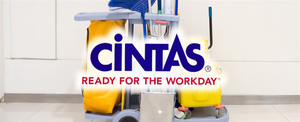If you’ve worked in California or hired help here, you’ve probably heard the back-and-forth about who counts as an employee and who counts as an independent contractor. It sounds simple at first, then turns thorny the moment real life shows up. Paychecks, taxes, benefits, and on-the-job protections all hang on that call. People reach out to Nakase Law Firm Inc. with the same starter question again and again: what is the Borello test? That single line opens the door to a much bigger conversation about how work actually happens day to day.
The short version is this: California courts use a set of clues—born from a 1989 case—to figure out whether someone is truly part of a company or running their own shop. And yes, even with newer rules getting airtime, this older test still matters a lot. For small teams and mid-sized companies asking how to keep payroll clean and fair, firms like California Business Lawyer & Corporate Lawyer Inc. hear a close cousin to that first question: what is the difference between a 1099 contractor and an employee? Once you ask that, you’re already on Borello’s doorstep.
A quick scene to set the stage
Picture a Central Valley farm in the late ’80s. Dawn light. Rows of vines. A crew bends and picks while the sun climbs. The grower says, “They work their own way—we just pay by the crate.” The state replies, “This is your land, your harvest, your rules. That looks like regular employment.” The California Supreme Court didn’t stop at a job title. It looked at the whole setup—how the work ran, who called the shots, who brought what—and pulled together a list of factors we still use.
The heart of Borello: who gets to call the shots
Start with the big one: control. Not just the end result, but the how. If a company sets the schedule, spells out the steps, and expects a person to use its tools in its space, that leans toward employee. On the other hand, if a specialist chooses hours, methods, and gear, and delivers a finished product without day-to-day oversight, that points toward contractor. Simple on paper, sure. In real life, it often lands in between—so we keep going.
The other clues courts weigh
Borello doesn’t stop at one sign. It collects a handful and asks you to look at them together:
-
Does the person run a separate business that keeps going with or without you?
-
Is the work usually done under someone’s eye, or is it self-directed most of the time?
-
Does the role call for a distinct trade or skill?
-
Who brings the tools, materials, software, or workspace?
-
Is this a short project, or does it look like an ongoing seat on the team?
-
How does payment work—by project or by the clock?
-
Is the work part of your core business, or more on the side?
-
What do both sides say the relationship is (even though labels don’t control the outcome)?
Each detail adds color. No single item rules the day, and that’s the point—it’s a picture, not a checkbox.
Where the ABC test fits, and why people mix them up
These days, the ABC test gets a lot of attention. It came later and sets a tougher line: a worker is an employee unless the company can show the person is free from control, does work outside the company’s usual business, and runs an independent trade. That’s a tall order. Picture a neighborhood bakery hiring cake decorators. If decorating is part of the bakery’s main thing, ABC will often push those decorators into employee status. Borello still matters, though, especially for roles and industries that fall into exceptions. So yes—both tests exist, and which one applies can depend on the type of work and the legal carve-outs involved.
What this means for employers in plain terms
Misclassification can snowball. Back pay, overtime, benefits, payroll taxes, penalties—it adds up fast. So teams try to map their setup to Borello early instead of waiting for trouble. Let’s say a startup brings in a photographer for a one-day product shoot. The photographer brings gear, sets the schedule, and sends an invoice. That lines up with contractor status. Shift the facts: a copywriter shows up daily, uses company equipment, takes direction from managers, and works on core campaigns for months. Now the picture leans toward employee.
What this means for workers when things get messy
Employees get baseline protections: minimum wage, overtime, unemployment insurance, and workers’ comp. Contractors trade those protections for more control over time and tools. Many folks don’t notice the stakes until something goes wrong—a layoff, an injury, unpaid hours. That’s when the label on a 1099 may not match the real story, and Borello becomes the lens to sort it out.
A few lived-in examples
-
A freelance web designer sets up her own LLC, handles three clients at once, buys her own software, and invoices by project. She checks in for milestones but not for daily direction. That leans contractor.
-
A delivery driver wears a company uniform, follows preset routes, uses the company’s app, and can’t swap shifts easily. That leans employee.
-
A hospital brings in a traveling nurse through an agency for a limited assignment; the nurse carries licenses, brings certain tools, and moves on after the contract. This can swing either way depending on control and how integrated the role is.
Notice how small changes tilt the call. That’s why folks ask for help early, before the picture hardens.
Industries that run into Borello the most
Agriculture sits at the origin story, but it’s far from alone. Construction, trucking, health care, and creative services all feel this. A painting crew on a large build may be labeled subcontractors. If they rely on one general contractor for steady work, follow that person’s schedule, and use the general’s tools, Borello can pull them toward employee—especially if painting is central to the project.
California rules vs. federal yardsticks
Borello is a California tool. Federal agencies use their own yardsticks that focus on money flows, behavior, and the paper trail. So a person might count as a contractor at the federal level and an employee under California law. Companies that cross state lines learn fast that one label doesn’t travel neatly. The fix is less about clever wording and more about how the work truly runs.
So, what do you do with all this?
For business owners: write down how the work actually happens—tools, location, supervision, payment, and whether the role touches your main line of business. If the facts point both ways, pause and get advice before hiring in that role again. It costs less to adjust early than to repair later. For workers: keep records. Save schedules, instructions, equipment agreements, and pay details. If things feel off, those details help sort it out.
A quick note on contracts
Contracts matter for clarity, not as magic wands. Calling someone a “contractor” won’t carry the day if daily life looks like employment. Good paperwork should match reality: scope, milestones, independence, tools, substitution rights, and the number of clients a person can serve. When the paperwork and the facts agree, you’re on safer ground.
Why people bring in a lawyer
No one wants a dispute to eat a quarter of the year. People bring in counsel to spot weak points, clean up agreements, and, when needed, push or defend claims. Some days that means helping a shop owner sort roles before a big season. Other days it means getting a misclassified worker paid. Either way, the goal is steady footing and fewer surprises.
Bringing it home
So, what is the Borello test? It’s a set of clues that looks at the real shape of work—who directs it, how it runs, what tools are used, how central it is to the business, and more. Labels help organize, but the day-to-day facts do the talking. For employers, that means setting up roles with care. For workers, it means knowing when the setup points toward employee protections. In the end, Borello asks a simple question in everyday language: does this look and feel like part of the company, or more like a separate enterprise? Answer that honestly, and most of the rest falls into place.
Media Contact
Company Name: Nakase Law Firm
Contact Person: Brad Nakase
Email: Send Email
Country: United States
Website: nakaselawfirm.com





